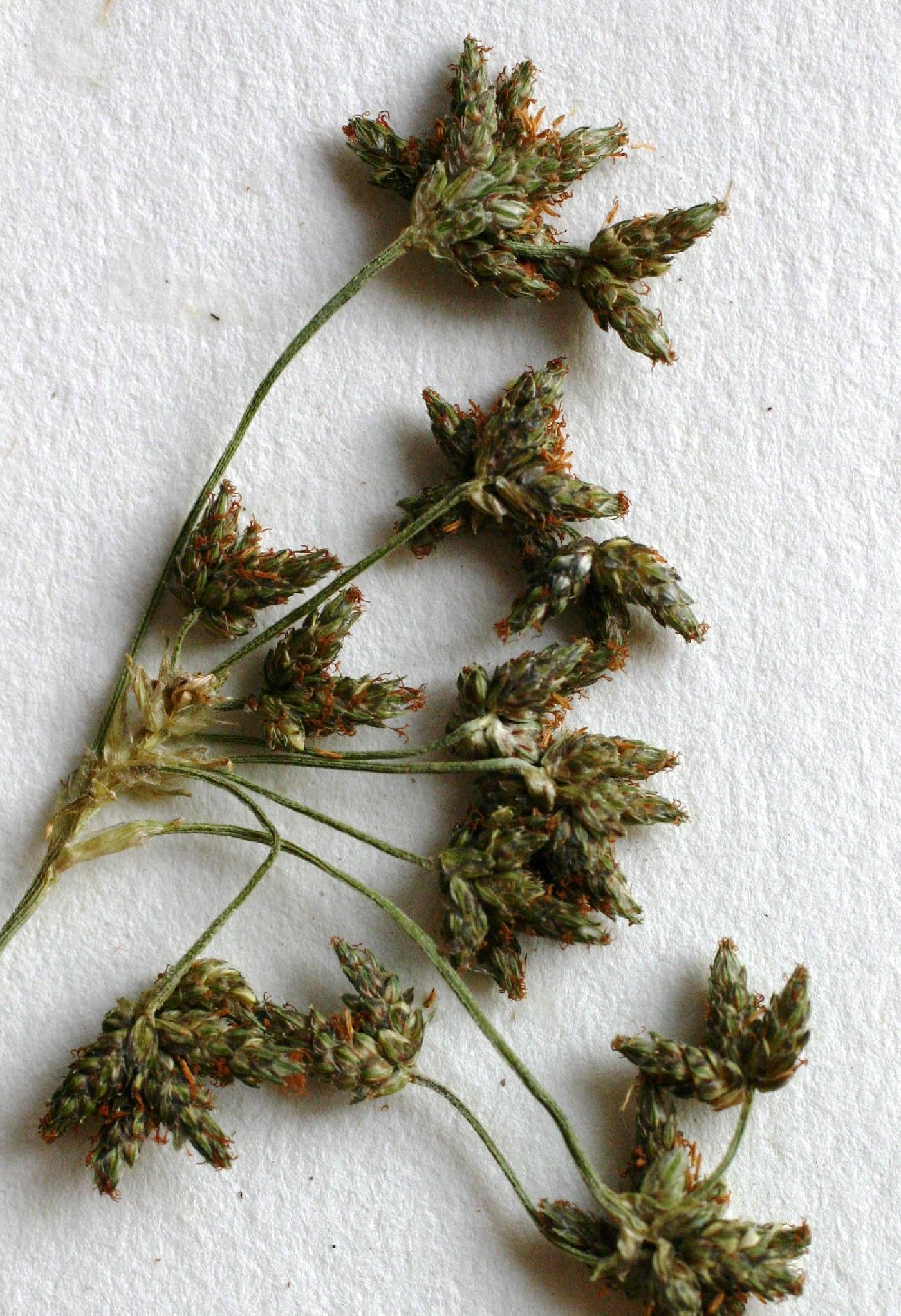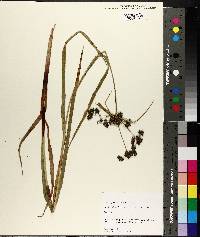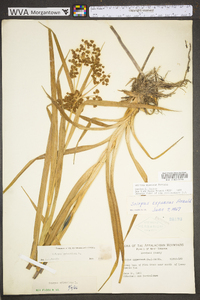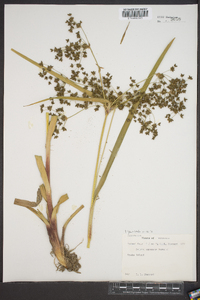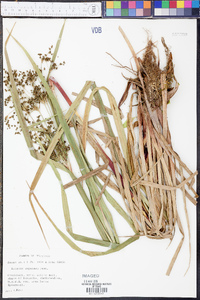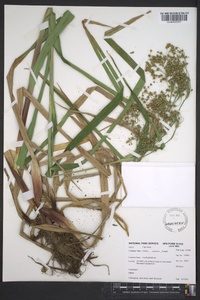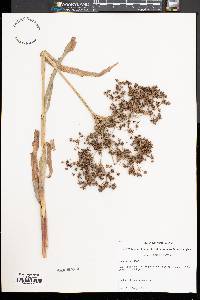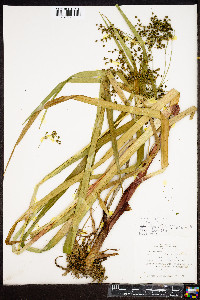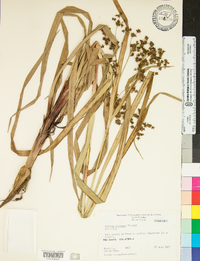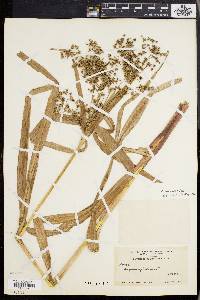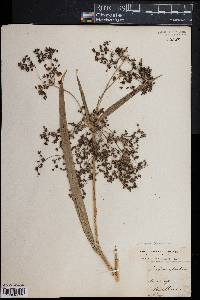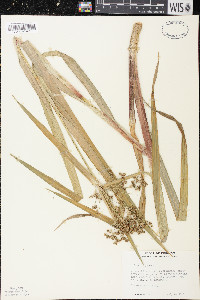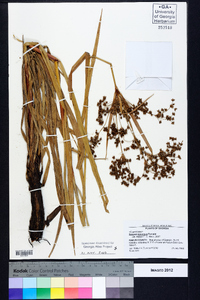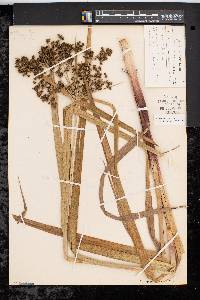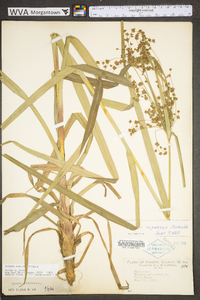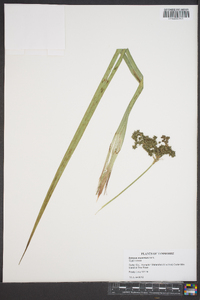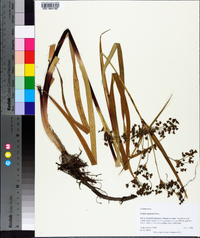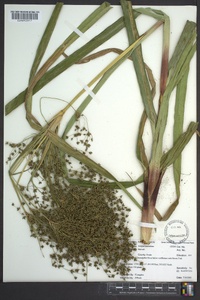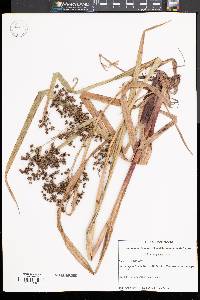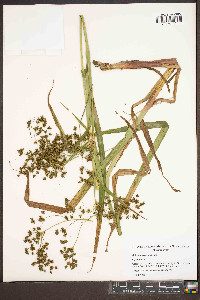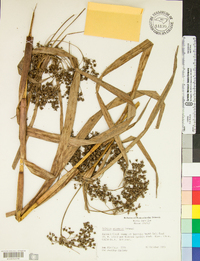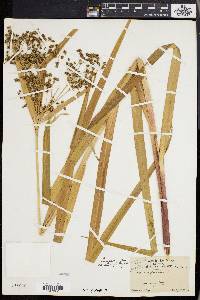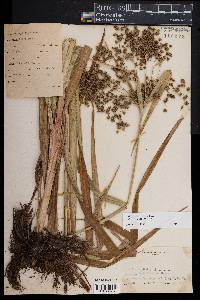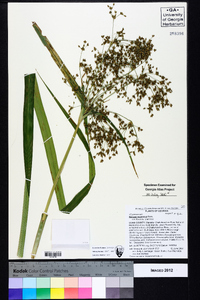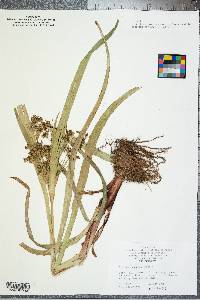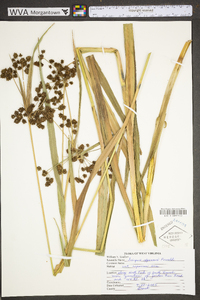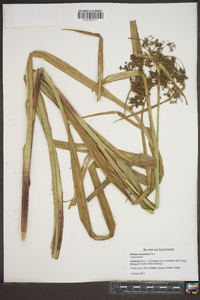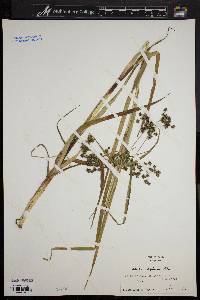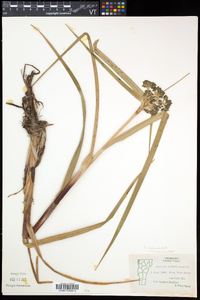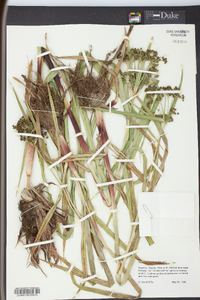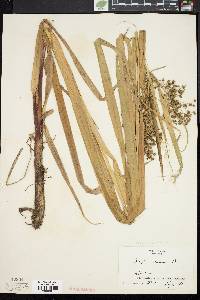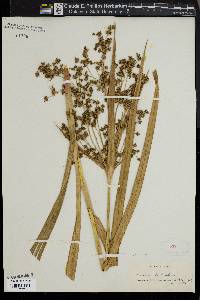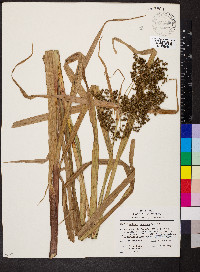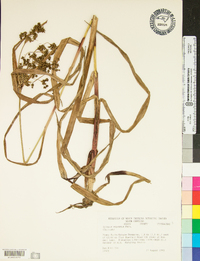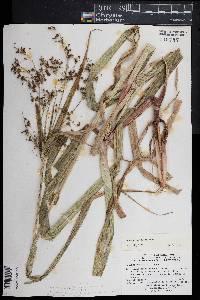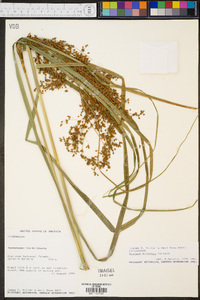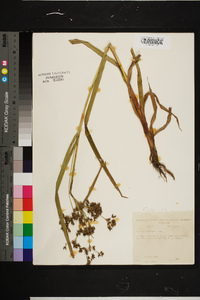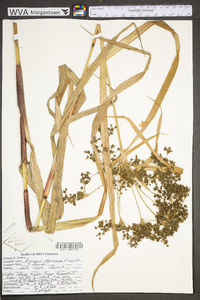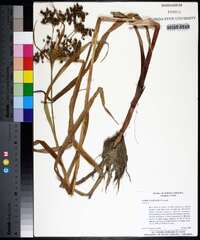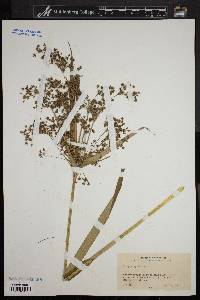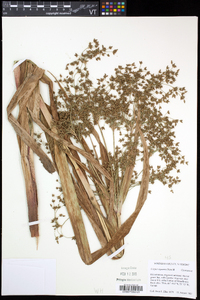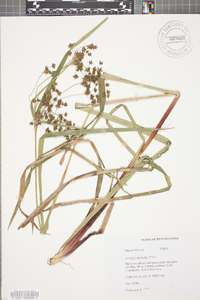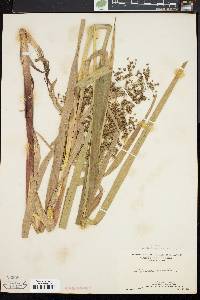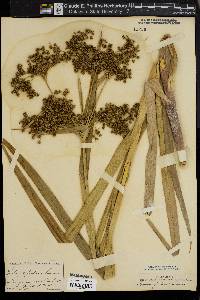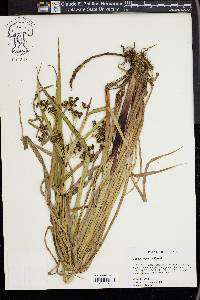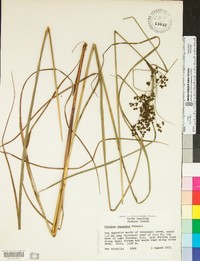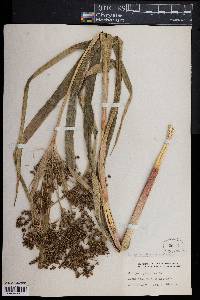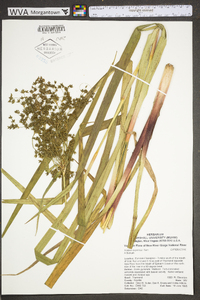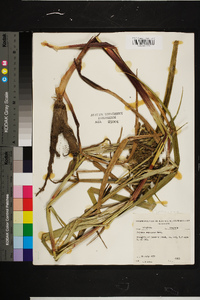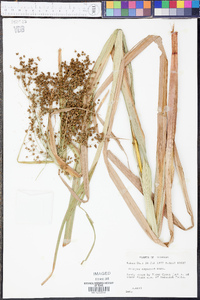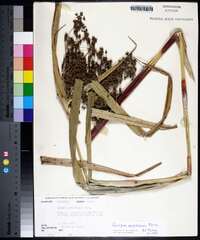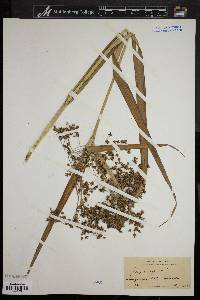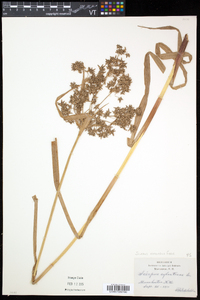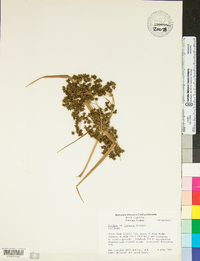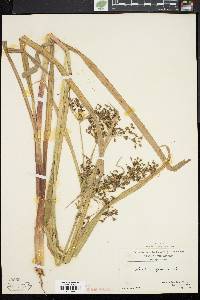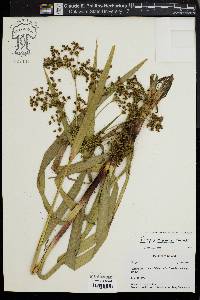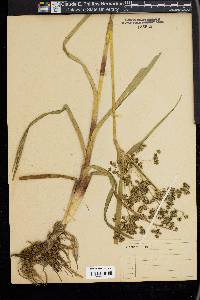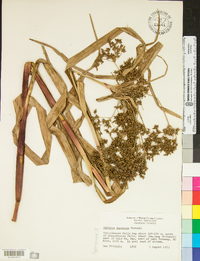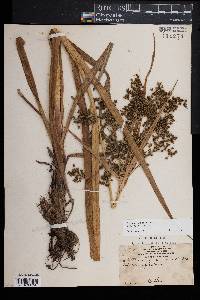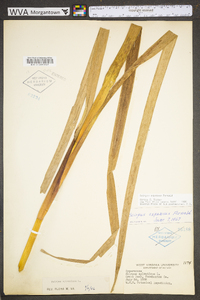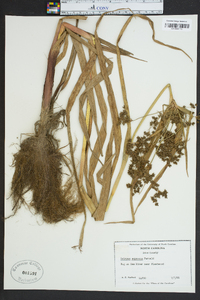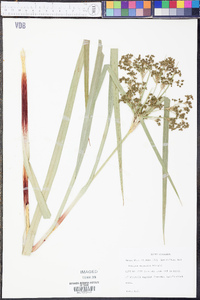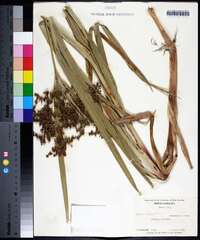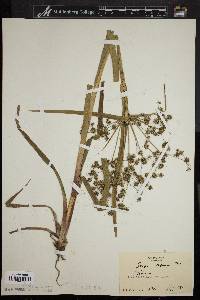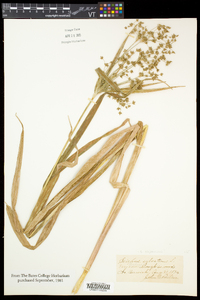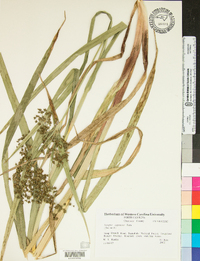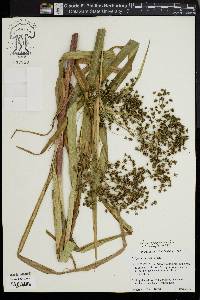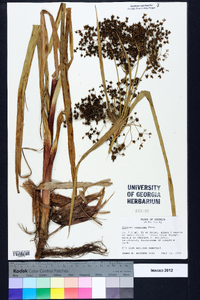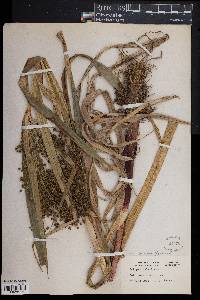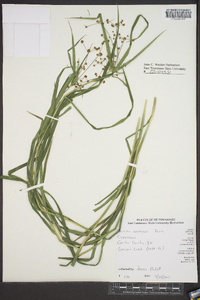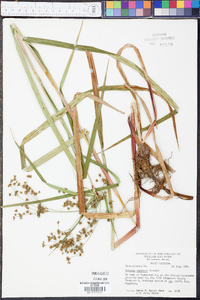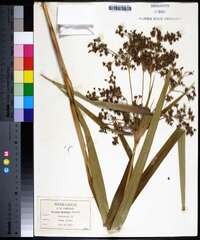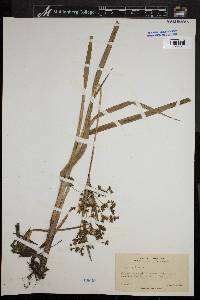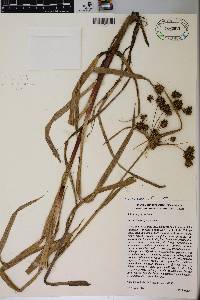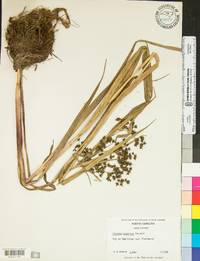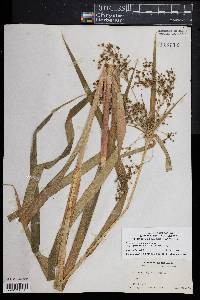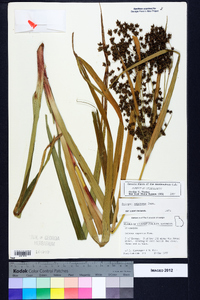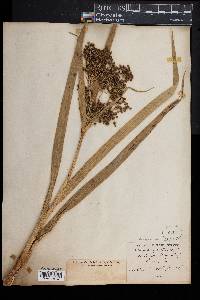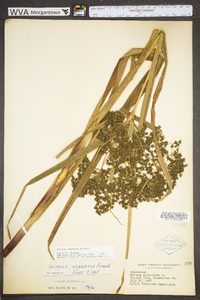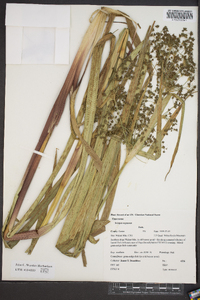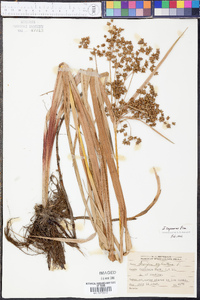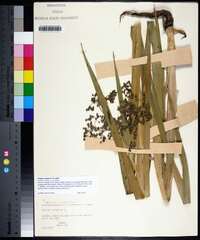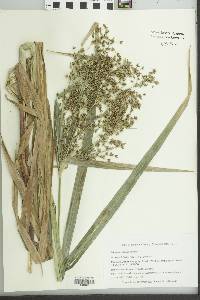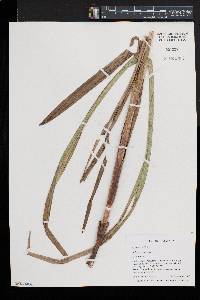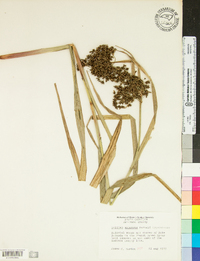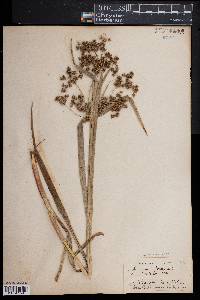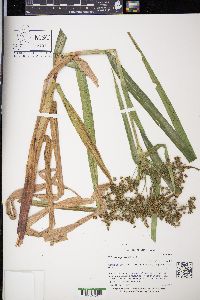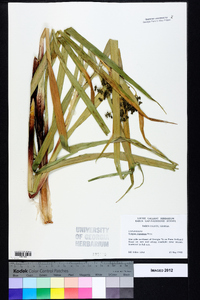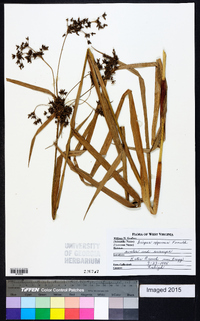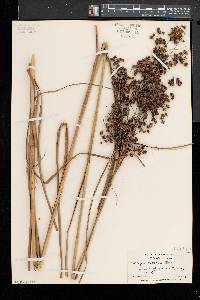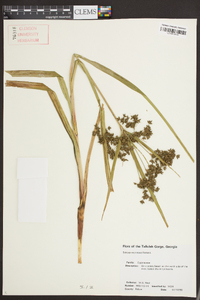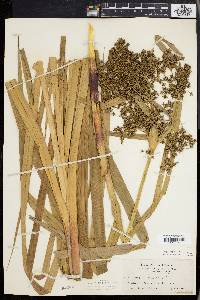Scirpus expansus
|
|
|
|
Family: Cyperaceae
Woodland Bulrush
[Scirpus expansus f. bissellii (Fernald) Fernald, moreScirpus expansus f. globulosus Fernald, Scirpus sylvaticus var. bissellii] |
Plants spreading; rhizomes reddish, long, with conspicuous nodes and internodes. Culms: fertile ones upright or nearly so; nodes without axillary bulblets. Leaves 5-8 per culm; sheaths of proximal leaves red; proximal sheaths and blades with septa many, conspicuous; blades 30-68 cm × 9-23 mm. Inflorescences terminal; rays divaricate or occasionally ascending, proximal branches scabrellous (rarely smooth), distal branches scabrous, rays without axillary bulblets; bases of involucral bracts green or reddish, not glutinous. Spikelets in dense clusters of (1-)3-13(-24), (largest cluster with 7 or more), spikelets sessile, ovoid or narrowly ovoid, 2-6 × 1-3 mm; scales black with green midribs, ovate or broadly rounded-ovate to nearly triangular or broadly triangular, 1-2.2 mm, apex rounded to mucronate, mucro (if present) to 0.2 mm. Flowers: perianth bristles brittle-based, readily detached from achene, 6, stout, straight or curved, shorter than to 1.5 times as long as achene, with retrorse, thick-walled, sharp-pointed teeth densely arranged almost to base, at maturity projecting beyond scales; styles 3-fid. Achenes pale brown, oblong-elliptic to broadly elliptic or obovate in outline, plano-convex or sometimes plumply trigonous, 1-1.6 × (0.6-)0.8-1 mm. 2n = 64. Fruiting summer (Jul-Aug). Marshes, wet meadows; 0-1100 m; N.S., Ont.; Ala., Conn., Del., D.C., Ga., Maine, Md., Mass., Mich., N.H., N.J., N.Y., N.C., Ohio, Pa., R.I., S.C., Tenn., Vt., Va., W.Va. North American reports of Scirpus sylvaticus Linnaeus, a widespread Eurasian species, are based on specimens of S. expansus and S. microcarpus. Scirpus expansus occasionally hybridizes with S. microcarpus, particularly in New England, and the names S. sylvaticus var. bissellii Fernald, S. expansus forma bissellii (Fernald) Fernald, and S. rubrotinctus forma radiosus Fernald are based on specimens of S. expansus × microcarpus. Hybrids are easily recognized by their elongate spikelets in which most of the ovaries are empty and abortive. Despite the low fertility of these hybrids, hybrid populations are able to persist in some places, particularly south of the range of S. microcarpus in the Delaware Valley.
Perennial herb with long, reddish rhizomes, spreading to 2 m tall Leaves: three-ranked, five to eight per culm. Sheaths of lower leaves reddish. Blades 30 cm - 0.7 m long, 1 - 2.5 cm wide, keeled beneath. Inflorescence: a large, terminal arrangement of spikelets, two- or three-times branched with numerous diverging stalks, subtended by three leaf-like bracts. Bracts green or reddish basally. Flowers: minute, subtended by a floral scale, lacking sepals and petals, bearing six bristles. Bristles stout, brittle basally, more or less straight, light brown or pale, shorter than to one and a half times longer than achene, bearing sharp teeth near the base, growing past the scales at maturity, deciduous. Stamens one to three, exserted. Pistil one. Style linear, three-cleft, base persistent. Fruit: a one-seeded achene, light brown, 1 - 1.5 mm long, to 1 mm wide, narrowly to broadly elliptic or reverse egg-shaped, tiny-beaked, flat on one side and convex on the other or sometimes plumply three-sided, minutely bumpy. Culm: stout, to 2 m long, three-sided, solid. Spikelets: in dense clusters of three to fifteen or more, stalkless, 2 - 6 mm long, 1 - 3 mm wide, narrowly egg-shaped to egg-shaped. Floral scales spirally arranged, black with a green midrib, 1 - 2 mm long, broadly rounded to egg-shaped to nearly triangular with a rounded or sometimes tiny-pointed apex. Similar species: No information at this time. Flowering: June Habitat and ecology: Rare in the Chicago Region, and known only from Berrien County, Michigan and Porter County, Indiana. In Michigan it grows in wet woods and ditches. In Indiana it has been found growing in a ditch and along a bike trail. Occurence in the Chicago region: native Etymology: Scirpus comes from the Latin name for a bulrush. Expansus comes from the Latin word expandare, meaning "to spread out." Author: The Morton Arboretum Perennial from long reddish rhizomes; stems arising singly, stout, to 2 m; lower sheaths anthocyanic at base and usually also at the orifice; blades 1-2 cm wide; infl twice or thrice branched with numerous long rays mostly at acute angles; spikelets 2.5-5 mm, ovoid to seldom cylindric, sessile in small glomerules; scales 1.3-2.2 mm, broadly oval, obtuse or minutely mucronulate, with broad green midstrip, the thin sides greenish, becoming black; bristles 6, pale or light brown, shorter to somewhat longer than the achene, nearly straight, retrorsely barbellate almost to the base, deciduous; style trifid; achene pale brown or purplish-brown, 1-1.6 mm, compressed-trigonous, broadly obovoid, minutely beaked; 2n=64. Swamps and streamsides; Me. to Ga., w. irregularly to O. and Mich. Fr July, Aug. Closely allied to the Eurasian S. sylvaticus L. (S. sylvaticus var. bissellii, a hybrid of nos. 21 [Scirpus microcarpus C. Presl] and 23 [Scirpus expansus Fernald]) Gleason, Henry A. & Cronquist, Arthur J. 1991. Manual of vascular plants of northeastern United States and adjacent Canada. lxxv + 910 pp. ©The New York Botanical Garden. All rights reserved. Used by permission. |

